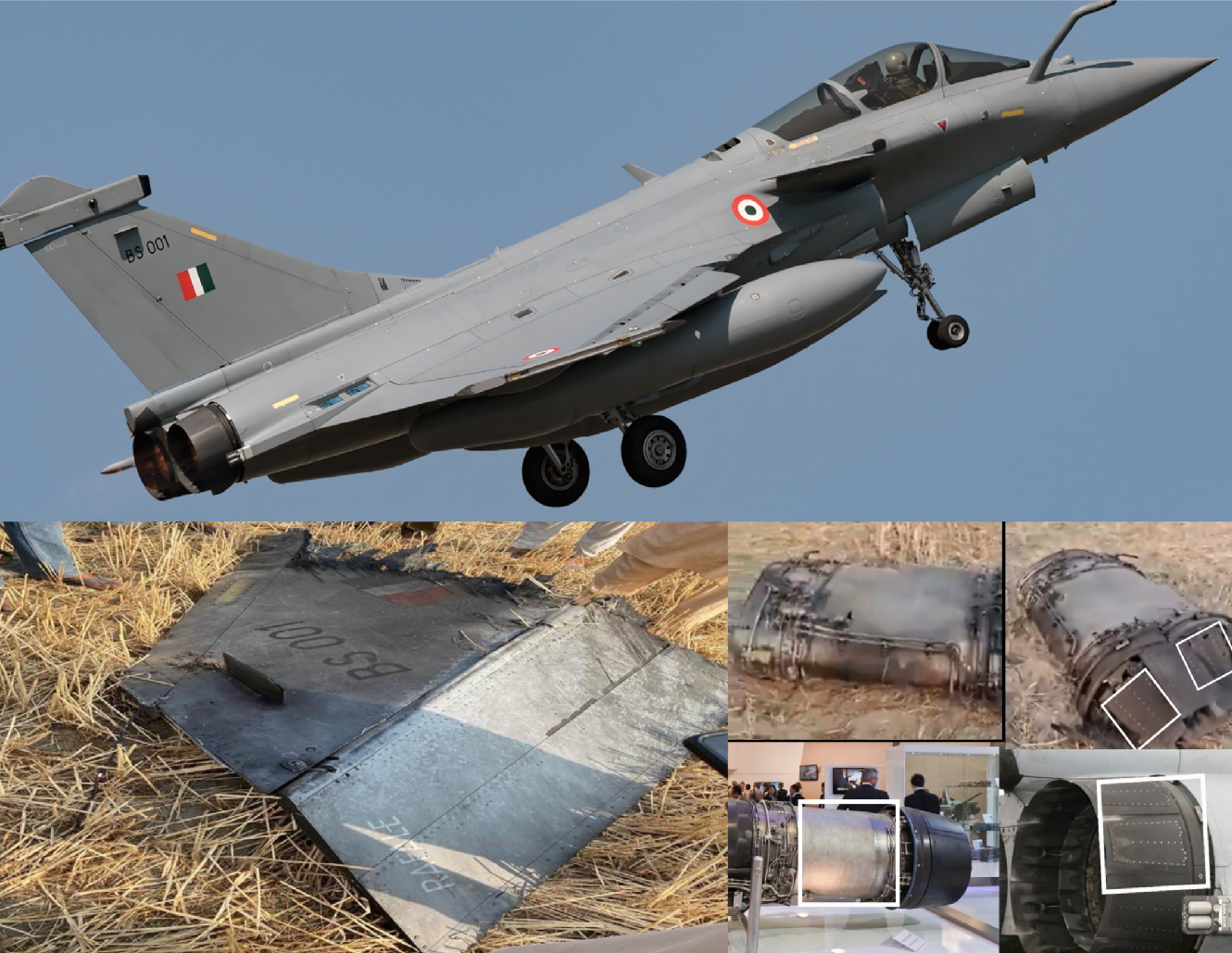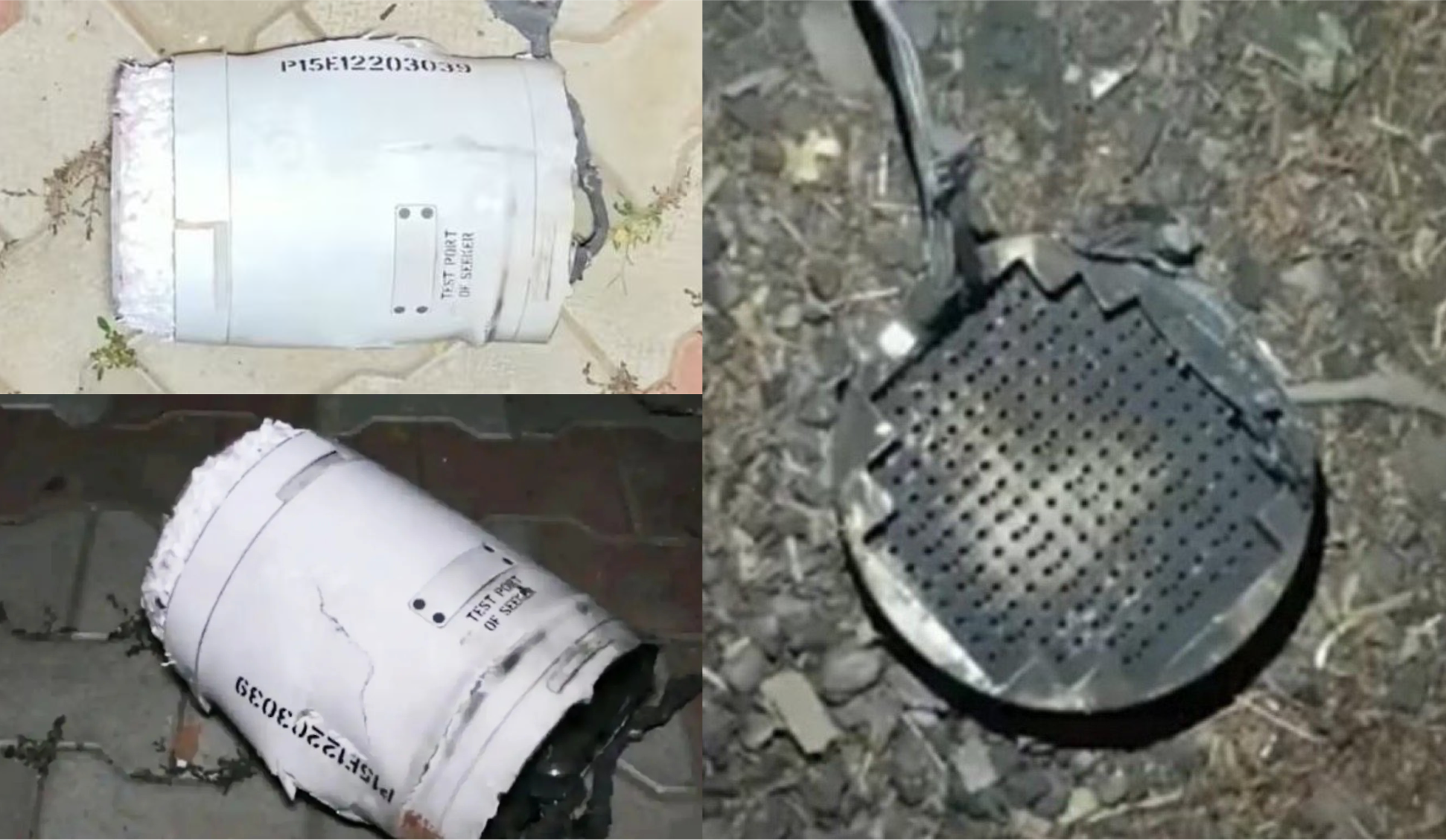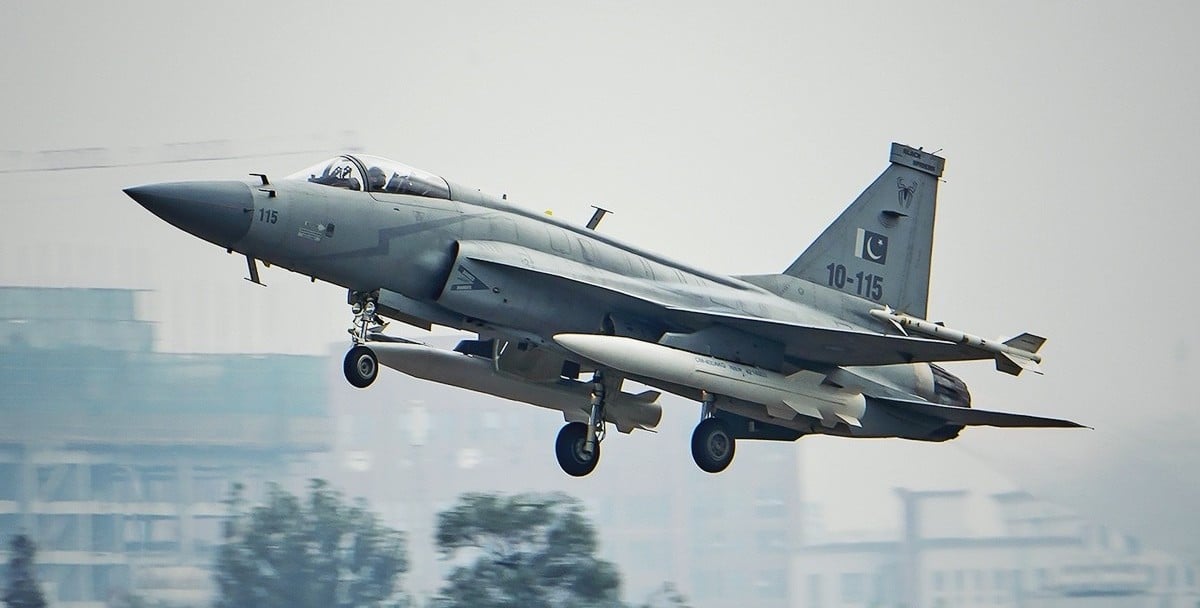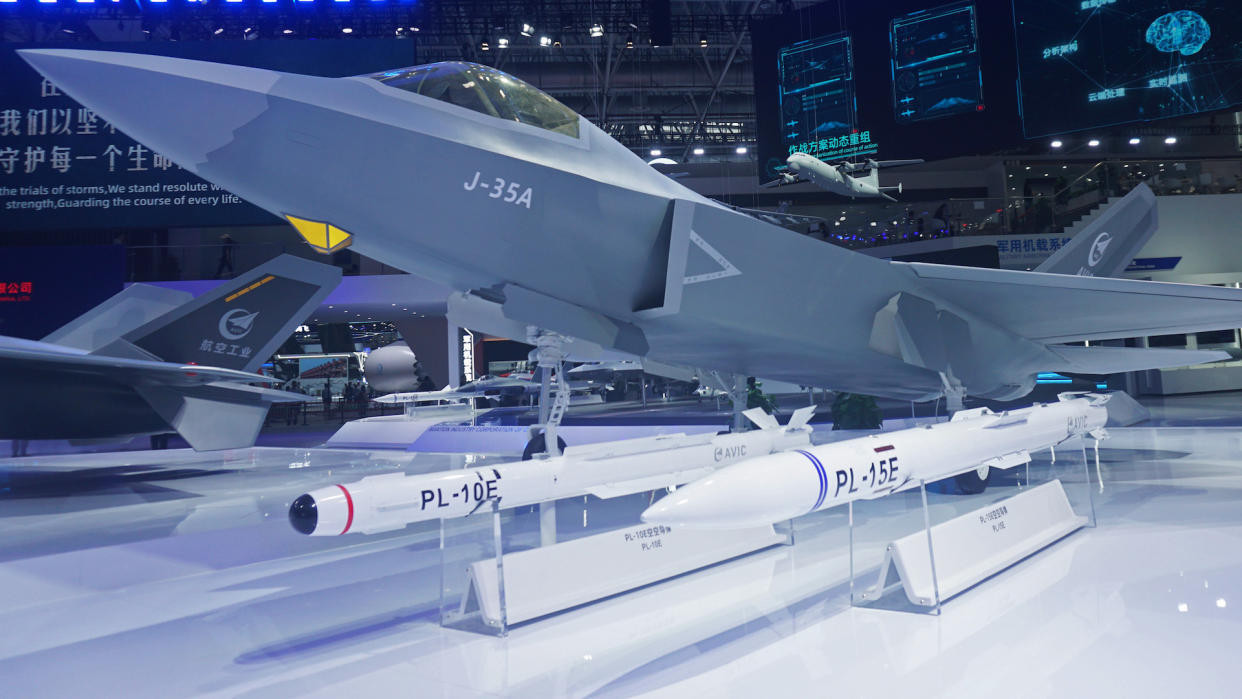Between the night of May 6 and 7, Pakistan and India were locked in the fiercest air battle of the 21st century. As many as 125 fighter jets took the sky, the numbers advantage tilted heavily in India’s favour.
When the dust settled and the fog of war lifted, Pakistan’s claim of downing five Indian Air Force jets — including three of its prized Rafale fighters — sent shockwaves through global military circles. The fact that the French-made 4.5th-generation Rafale was shot down in combat for the first time since it took to the skies was newsworthy in itself. But what stood out even more than the kills Pakistan claimed was the technology it reportedly used to achieve them: Chinese-made fighter jets, missiles, radar, and electronic warfare systems.
Since the aerial engagement, analysts and defence industry sources — both Western and Chinese — have spoken to various news outlets about why the live deployment of such advanced weapons, potentially usable in future great power conflicts, will be scrutinised in meticulous detail.
“I think this brings us back to a type of aerial combat we haven’t seen in a long time,” Newsweek quoted Walter Ladwig, Associate Fellow at the Royal United Services Institute (RUSI), as saying. “Fighter jets had taken a backseat, but now we’re witnessing a clash between states deploying their frontline weapons. This is what state-on-state war looks like.”
“Air warfare communities in China, the US, and several European countries will be extremely eager to extract as much ground truth as possible — tactics, techniques, procedures, what equipment was used, what worked and what didn’t,” Douglas Barrie, senior fellow for military aerospace at the International Institute for Strategic Studies, told Reuters.

As open-source evidence mounted that Pakistan’s newly acquired J-10CE fighter jet had downed a Rafale, shares of the Chinese aviation firm Chengdu soared more than 40 per cent in just two days.
“The Rafale is a very modern aircraft and a top-line fighter in the Indian arsenal,” Ladwig told Newsweek. “India’s acquisition of it was a cornerstone of its air force modernisation.”
The likelihood that it was downed by a state-of-the-art Chinese fighter came as a “pleasant surprise” for Beijing, noted Yun Sun, a Chinese military specialist at the Stimson Center in Washington DC, in article by the Financial Times. “There’s no better advertisement than a real combat situation… the result is quite striking,” he was quoted as saying.
According to the Financial Times piece, defence attachés from China’s Western rivals were already “impatient” for India to share radar and electronic signatures from the J-10CE in combat mode, so that their own aerial defence systems can be trained accordingly.
“This is the most important global aspect — this is the first time Chinese military equipment has been tested against top-tier Western systems,” said Sushant Singh, a lecturer at Yale University’s South Asian Studies programme, in remarks to the Financial Times. “However this ends, the final reckoning will have implications for Taiwan and for how Western defence firms respond to China’s combination of low-cost and high-tech capabilities.”
Speaking to The Telegraph, Hu Xijin, former editor of China’s state-owned Global Times, stated that the battle demonstrated “China’s level of military manufacturing has completely surpassed that of Russia and France,” adding that Taiwan should now be “even more scared.”

For China, the skirmish tested not only the aircraft but also the systems it employs — like the active electronically scanned array (AESA) radar system it is equipped with and the PL-15 beyond-visual-range (BVR) air-to-air missiles it can be armed with.
Aurangzeb Ahmed, Pakistan’s Deputy Chief of Air Operations, confirmed that variants of the PL-15 missile were used in the engagement. The hour-long aerial battle, he boasted, “would be studied in classrooms,” adding, “We knocked some sense into these guys.”
Robert Tollast, a researcher at RUSI, told the Financial Times that the use of the PL-15 missile could be “highly significant.”
“If confirmed, we’ve now seen a Chinese-made AESA paired with a beyond-visual-range missile used in combat,” Tollast said. Western nations and Russia have tested their own AESAs for decades, but details from just this single skirmish — such as how many missiles were fired per hit — “could be tremendously useful for China in evaluating the capabilities of its systems,” he added.
Chinese military analysts have long viewed the PL-15 as a top-tier BVR missile. “But if a hit is confirmed, this becomes a public demonstration of Chinese aerospace prowess,” Fabian Hoffmann, a missile researcher and non-resident fellow at the Center for European Policy Analysis, told The Telegraph.
“This is another signal that, in a Taiwan conflict, we shouldn’t assume Chinese tech would perform like Russia’s in Ukraine,” he noted.
The PL-15 is guided mid-flight by an AESA radar located on the launch platform or a separate vehicle. Near the target, its own onboard AESA radar activates, locking on and homing in with high precision. A dual-pulse motor gives it an additional burst of speed around 10 kilometres from impact.
“These are very fast weapons,” Hoffmann was quoted as saying. “They essentially have a ‘no-escape zone’. The shift from external to onboard radar also lets the launching jet disengage and avoid counterfire. There’s survivability for the launch platform, and lethality for the missile itself.”
According to Rick Joe, an expert on China’s military advancements, the Pakistan-India aerial engagement — regardless of the actual kill tally — has significantly boosted the profile of China’s tactical air capabilities, both among the general public and former sceptics. “For those who have been seriously tracking China’s defence sector, the fact that the J-10C and PL-15 are performing as advertised should come as no surprise,” he told The Express Tribune.
According to estimates by the Stockholm International Peace Research Institute and the International Institute for Strategic Studies, approximately 81 percept of Pakistan’s military equipment originates from China, including more than half of its 400-strong air force fleet. The military hardware China supplies has evolved along with its own defence industry, Andrew Small, a Pakistan-China relations expert at the German Marshall Fund, told Financial Times.
Apart from cooperation on nuclear weapons and ballistic missiles, much of what China used to supply was low-end like tanks, artillery and small arms, Small noted. “Now, Pakistan is becoming a showcase for some of China’s newer capabilities.”
India, meanwhile, has become the world’s largest weapons importer, shifting from a dependency on Russian arms to purchasing from the US, France and Israel, which now account for nearly half of its recent acquisitions.
“The big advantage the Pakistanis have is that their primary weapons supplier is China,” The Telegraph quoted Walter Ladwig as saying in a different piece. “India may have a larger defence budget and modernisation programme on paper, but Beijing delivers.” He pointed out that China has rapidly supplied Pakistan with armour, the jointly developed JF-17 fighter jet, and missile systems.

India’s primary suppliers — Russia and France, providing 36 and 33 percept of imports respectively — have been slower to meet orders. “India’s air force is still flying antiquated MiGs,” Ladwig added.
Currently, Pakistan is the only country besides China operating the J-10C fighter. The Pakistan Air Force ordered 36 export-model J-10CE aircraft and 250 PL-15E missiles in 2020. The first six were delivered in 2022, and 20 are now in active service. Egypt is among nations that have expressed interest in the J-10C, while Uzbekistan is reportedly weighing it against the Rafale for its air force modernisation.
Nonetheless, defence analysts urge caution when interpreting the results of this technological faceoff as pilot error or rules of engagement may have contributed to the Rafale’s reported losses.
Speaking to The Express Tribune, Dr James Patton Rogers — Executive Director of the Brooks Tech Policy Institute at Cornell and an expert on drone warfare, disruptive technologies, and international security — echoed that caution.
“If you read Chinese media, you’d think they’re now global leaders in fighter jet manufacturing after one alleged shootdown,” he said. “But we need to see Rafales in full operational deployment to accurately assess how vulnerable they really are to Chinese aircraft.”
“The claims we’re seeing go beyond traditional dogfights,” emphasised Dr Rogers. “We should be more concerned about China’s electronic warfare capabilities… The J-10 seems capable of disrupting radar communication systems, impairing the Rafales’ situational awareness and forcing them to land — or crash,” he said.
That, he believed, was most likely to raise red flags in France, the US and rest of the West regarding just how sophisticated these jets have become.
“If the J-10s are now supposedly outperforming the F-16s, we may be witnessing a new benchmark of China’s military capability.”

Asked whether this could shift arms buyers toward China, Dr Rogers responded: “For some countries that were leaning that way anyway, this is the justification that they needed to push them over the edge politically and to make that case… about why to go with Chinese goods over others.”
“If you can make the case that Chinese weapons are militarily superior, it takes lot of the other politics out of it and it's easier to justify in this increasingly contested great power world we live in today,” he explained.
“I wouldn't be surprised if it has boosted the profile of Chinese arms, in particular J-10C and PL-15,” added Rick Joe. “Whether those nations will actually purchase PRC arms is another matter because procurement is a reflection of politics, cost, tech transfer, etc,” he stressed.
